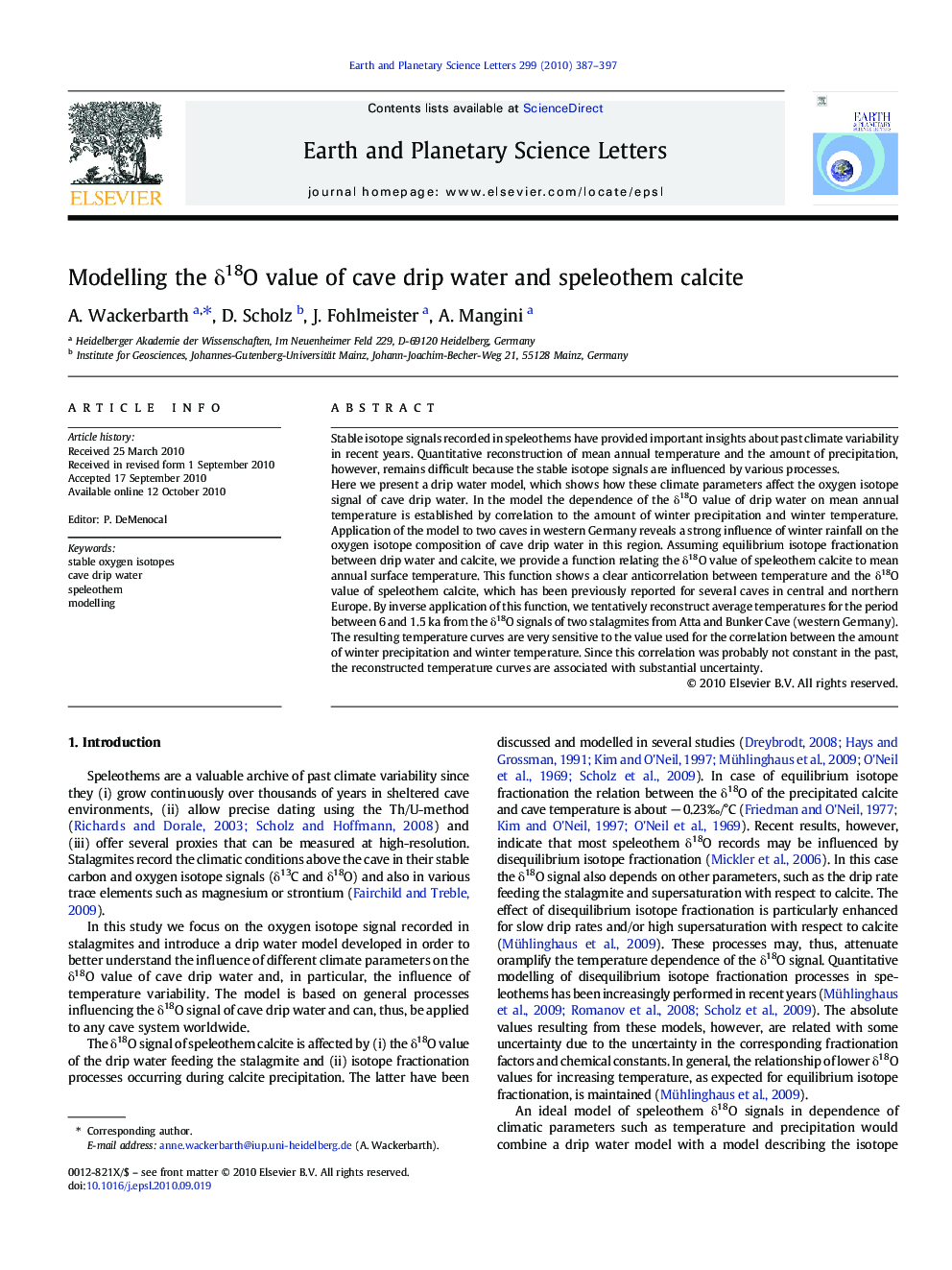| Article ID | Journal | Published Year | Pages | File Type |
|---|---|---|---|---|
| 4678310 | Earth and Planetary Science Letters | 2010 | 11 Pages |
Stable isotope signals recorded in speleothems have provided important insights about past climate variability in recent years. Quantitative reconstruction of mean annual temperature and the amount of precipitation, however, remains difficult because the stable isotope signals are influenced by various processes.Here we present a drip water model, which shows how these climate parameters affect the oxygen isotope signal of cave drip water. In the model the dependence of the δ18O value of drip water on mean annual temperature is established by correlation to the amount of winter precipitation and winter temperature. Application of the model to two caves in western Germany reveals a strong influence of winter rainfall on the oxygen isotope composition of cave drip water in this region. Assuming equilibrium isotope fractionation between drip water and calcite, we provide a function relating the δ18O value of speleothem calcite to mean annual surface temperature. This function shows a clear anticorrelation between temperature and the δ18O value of speleothem calcite, which has been previously reported for several caves in central and northern Europe. By inverse application of this function, we tentatively reconstruct average temperatures for the period between 6 and 1.5 ka from the δ18O signals of two stalagmites from Atta and Bunker Cave (western Germany). The resulting temperature curves are very sensitive to the value used for the correlation between the amount of winter precipitation and winter temperature. Since this correlation was probably not constant in the past, the reconstructed temperature curves are associated with substantial uncertainty.
